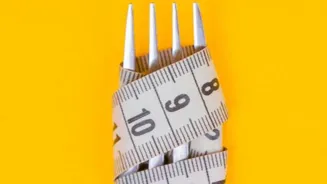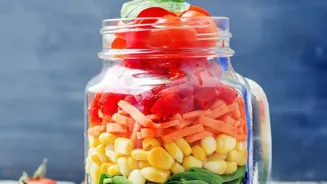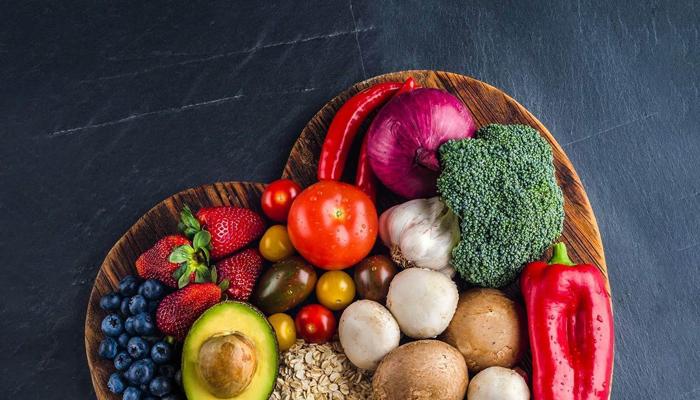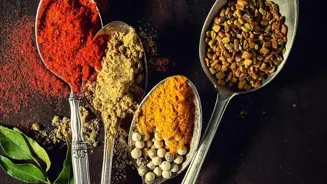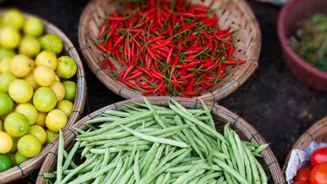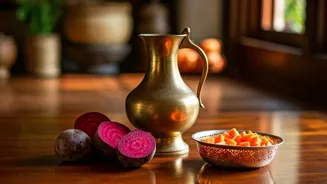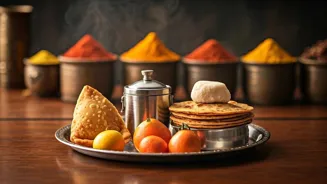Unveil the Secrets of Food Labels for a Healthier Lifestyle in India. Decoding labels for better choices
We Indians love our food! From spicy chaat to comforting dal-chawal, our cuisine is a celebration
of flavors. But in today's world, packaged foods have crept into our kitchens.
Knowing how to read food labels on these products is super important for making healthy choices for ourselves and our families. It's like having a secret code to unlock the nutritional value of what we are eating.
Don't worry, it is not difficult and this guide will help you understand the important aspects that can aid our healthier lifestyle.
Food label serving sizes crucial for calorie intake control
The first thing you should spot on a food label is the serving size. Pay close attention! All the nutritional information listed on the label is based on this serving size. Often, we tend to eat more than the recommended serving.
A packet of biscuits might seem like a single serving, but the label might say it contains two or three! If you eat the entire packet, you are consuming double or triple the calories, fat, sugar and other nutrients listed. Next, check the “Calories” section.
This tells you how much energy you get from one of those servings.
Balancing calories for energy and activity is key
Remember, calories are not the enemy! We need them for energy. The key is to balance the calories we consume with the calories we burn through activity. Keep an eye on the calories per serving and consider how it fits into your daily calorie needs.
A food high in calories might be alright if you are very active. Knowing what you are actually consuming is the first step to making those small changes that make a big difference.
Moderation in fat, sugar, salt crucial for health. Watch types of fat, added sugars, sodium intake
These three components – fat, sugar, and sodium (salt) – often get a bad reputation. While we shouldn’t completely eliminate them from our diet, it’s crucial to consume them in moderation. The food label provides you with the amounts of each of these nutrients per serving.
"Total Fat" section will tell you about different types of fat. Saturated and trans fats are the ones to watch out for. They can increase your risk of heart disease. Look for foods with lower amounts of these unhealthy fats.
Remember, unsaturated fats like those found in nuts and seeds are actually good for you!. Look for "Added Sugars". This is the sugar that has been added to the food during processing, not the natural sugars found in fruits, for example! Try and choose foods with little or no added sugars.
Excess sugar can lead to weight gain and other health problems. Many Indians are sensitive to high sodium intake. High sodium levels can be dangerous for some people.
Nutrition labels show %DV to assess nutrient content in food
The %Daily Value (%DV) is a helpful tool on the nutrition label. It tells you what percentage of the recommended daily intake of a particular nutrient is present in one serving of the food.
A %DV of 5% or less means that the food is low in that nutrient, while a %DV of 20% or more means that the food is high in that nutrient. Use the %DV to quickly assess whether a food is a good source of vitamins, minerals, or fiber, and whether it is high in fat, sugar, or sodium.
For example, if a cereal has 30% DV for fiber, it is a good source of fiber. If a snack has 25% DV for saturated fat, it is high in saturated fat.
Ingredients list reveals product composition and hidden additives
Don't neglect the ingredients list! It lists all the ingredients in the product, in descending order by weight. This means the ingredient listed first is present in the largest quantity, and the ingredient listed last is present in the smallest quantity.
This list tells you about what the product actually contains. Look out for hidden sources of sugar, like corn syrup, dextrose, or maltose. If you are trying to avoid certain ingredients, like artificial sweeteners, you can use the ingredients list to check if they are present.
Empower yourself with informed food choices for a healthier diet
Reading food labels isn’t about becoming a nutrition expert. It's about empowering yourself to make informed choices and build healthier eating habits. Try comparing two similar products side-by-side. Which one has less saturated fat and added sugar? Which one has more fiber?
Choose the option that better aligns with your health goals. Don't be too hard on yourself! It's okay to treat yourself to your favourite foods. The key is moderation and balance.
Also, remember to prioritize whole, unprocessed foods like fruits, vegetables, dals, and whole grains, which don't even need food labels! Making gradual changes to your diet and incorporating more mindful eating habits is the best way towards a healthier you.
AI Generated Content. Glance/InMobi shall have no liability for the content